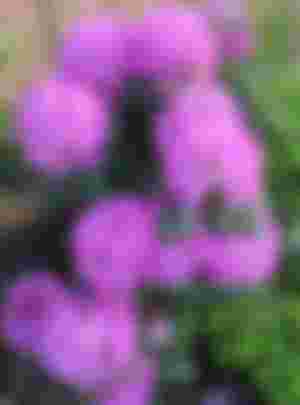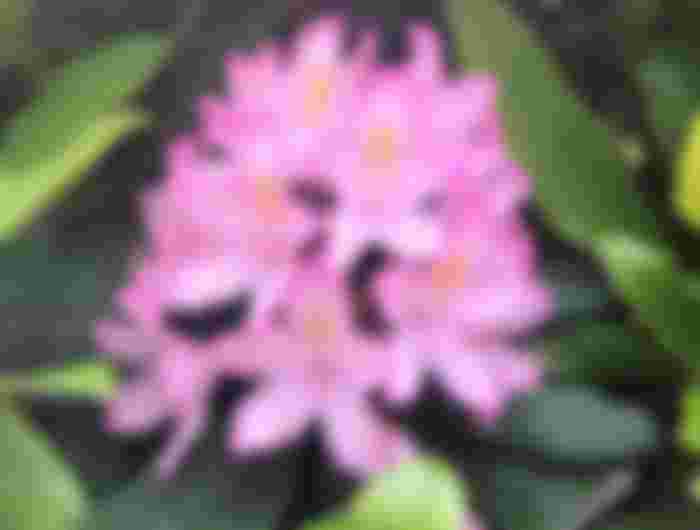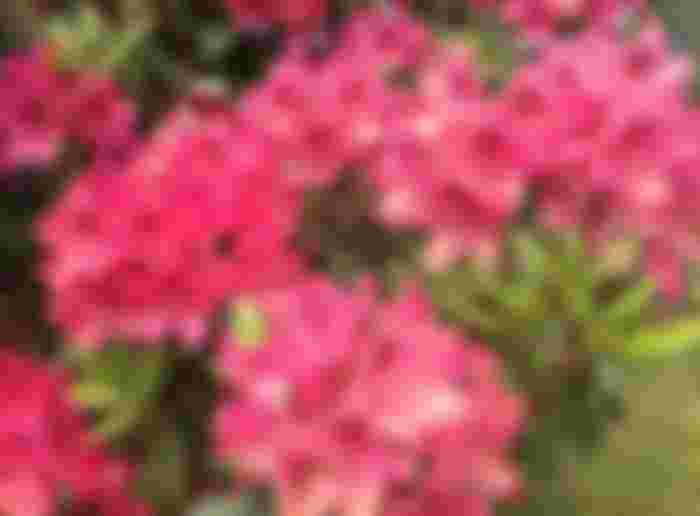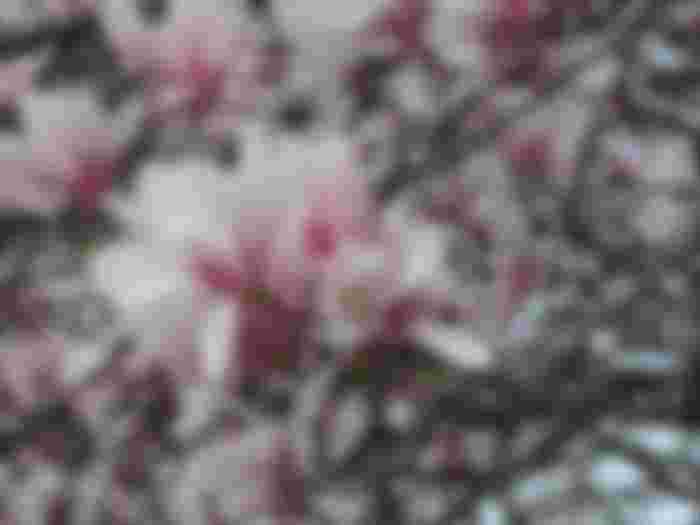When you say rhododendron, Bengalis can remember the white romance of Amit-Lavanya or the rhododendron of Mahinda's horses, 'the warmest day in the city ... believe in rain'. Rhododendron is the color of Rebecca's hot youth throughout the 1938 novel Rebecca by Daphne du Moriere. Hitchcock made his famous film 'Rebecca' based on this novel. But Rabindranath made the little-known 'rhododendron' glow in Bengali love poems, in his novel 'The Last Poem', in the poem "Rhododendron cluster at the top of the arrogant branch".
Rhododendrons are mainly found in mountains, hills, in the temperate to temperate climates of the Terai region. The Alps of Europe, the Australian Peninsula, Java-Sumatra, northern America, the Himalayan mountains of Asia, India, China, Japan, rhododendron pastures. There are currently about 1,100 species of rhododendrons in the world.

I first saw rhododendrons one summer afternoon in late spring, in New Jersey. Bright purple rhododendrons seem to be overflowing in the bushes in front of the house. It was in this part of America that Shirshendu Mukherjee met Rhododendron (in his book 'Bengal's Philosophy of America'). Rhododendrons are usually shrubs, evergreen and deciduous. The flower is inflorescence, i.e. clustered, sometimes fragrant. Red, purple and white flowers are more common. In the case of Azalia species, the flowers are mainly five-pollinated.
The Greek word ‘radon’ literally means rose and ‘dendron’ means tree. The father of modern taxonomy, (Born in 1707, Died in 1778) in his book 'Species Plantarum' (1853).. Earlier, this flower was called Alpine Rose, Alpine Rose or Snow Rose in Europe. Known in America as the Great Laurel, Swamp Honeycomb.
Britain's first acquaintance with rhododendrons was at the hands of the proverbial botanist Carolus Clucis (1526-1609). He was one of the pioneers of establishing a botanical garden in Britain. John Bartram (1699-1777) was the first significant researcher on rhododendron classification in America. He was the architect of America's first botanical garden. Together with his son William Bartram (1739-1823), he discovered a variety of rhododendrons from the oceans of Pennsylvania, Georgia and South Carolina in the United States. He gave some seeds and seedlings to Peter Collinson (1694-1768). Collinson was one of the members of the Royal Society in Britain. His ‘Peckham Garden’, later ‘The Mill Hill Garden’ was Britain’s best and rarest flower garden created on private initiative.

From the sixteenth to the seventeenth centuries, botanical gardens were established in Europe and America, and commercial hybridization began. The demand for rhododendrons is also increasing due to the unprecedented beauty of different trees, roses, tulips and other flowers. As a result, botanists started expeditions to different continents of the world to collect trees, flowers, saplings etc. The Himalayan foothills, China, Greater India, gradually rise to the top of the list of adventurers' preferences. With the rise of the East India Company in India, Europeans began to arrive. Notable among them is the rhododendron collector, known as the father of Indian botany. William Roxburgh (1751-1815). He listed specimens of about 5,000 Indian trees, including rhododendrons. The next prominent name is William Griffith (1810-1845). His list of 9,000 trees collected from Assam, Sikkim, Bhutan, Burma (now Myanmar) includes eight rare species of rhododendrons in Bhutan.
Behind the global fascination with rhododendrons, however, is the Indian state of Sikkim and a Sir Joseph Dalton Hooker (1817-1911). From 1848 to 1851, he discovered 45 rare species of rhododendrons in the deep Himalayan forests of Sikkim and spread them all over the world. His father, William Hooker, was the director of the famous Royal Botanical Garden in Kiwi. After completing his expeditions to Antarctica and the Atlantic Islands, he traveled to India to collect trees for the Q Garden at his father's direction.
January 12, 1848. Mr. Hooker set foot in the salty forests of the Sundarbans surrounded by Fan Palm, Arjun (Terminalia), and Toddy Palm. In Kolkata, the then ‘Superintendent of Calcutta Botanical Gardens’, Dr. Ellen, extended a helping hand. James Colwick, president of the McLean and Asiatic Society. The hooker started his journey on the palanquin provided by him on the Red Surki Dhaka Grand Tank Road. He has written in 'Himalayan Journals' about 6,000 tree specimens and experiences collected from Bengal and the Himalayan hills over a period of three years. He saw the villages of Bengal surrounded by mango-jackfruit-horse-horse-ashvattha, ‘poster fields like green lakes’, blue fields on the horizon, water-filled lakes in the shade of bats, bright sunflowers, mustard fields, lac forest. Went to the court of the king of Burdwan in the coal-inhabited Damodar basin, Pareshnath hill, the holy shrine of the Jains, Benares, the Hindu shrine. He reached Birbhum on the back of an elephant.
Mr. Hooker writes about the humid, hot summer heat of Bengal, and also about the clear starry night sky and the sweet Gangetic air. After a long journey, sometimes a dust storm, sometimes the attack of the mighty thugs, he first saw the line of the Himalayas in the Dikchakrabal in the Terai of Siliguri. In the meantime, one picture after another is being painted which is all over the page of 'Himalayan Journals'. He proceeded towards Darjeeling. The soft path changed to a crooked rocky height. Tamarind, Topajul (Jujube), Copper flower (Blood, Bauhinia), Swarnalata (Cuscuta), Acacia (Acacia) are grown in a large arrangement of juniper, Manjistha (Rubia) birch, maple tree. In Darjeeling, Mr. Mr. Hooker writes of the sublime feeling of seeing the Himalayas through the window of Hudson's house,
‘In the distant clear snow-capped mountains, sometimes freshly raised, sometimes painted in orange, gold, ruby in the reflection of the clouds in the melting glow of the sunshine, sometimes in it the twilight pale color. Such an aerial scene as if one wants to see it day after day in an indescribably unbridled mood. '
In Darjeeling, at an altitude of 7,300 feet in the riverine Balashon valley, Ashoka (Honeysuckle), Korbi (Laurels), Basantikusum (Primrose), Nilaba Puspa (Hydrangea) first saw fragrant white rhododendrons next to the rhododendron. Among the sketches drawn by Hooker is the famous Rhododendron Dalhousie, which was later included in his book Rhododendrons of Sikkim-Himalayas.

On the way up and down the banks of the Rangit river, tea gardens, overgrown Lepchad potatoes, wild strawberries, sorghum, cumin, cannabis fields, cane bridges, ‘Om Manipadme Hun’ Buddhist mantra carved cliffs reached Sikkim. There rhododendron is known as ‘Guras’. A wonderful sherbet is made with its petals. Not only the collection of trees, Hooker also gives a description of the way of life of the various hill tribes of the Himalayas, including the hill tribes like Lepcha, Gorkha, Murmi, Marga, Bhutia, Tibetan, Khasia, Garo etc.
In Nepal, the infamous poison 'bikh' made from tree roots, musical instruments made of human animal bones in ancient Buddhist caves, stone coffins with Khasia inscriptions, Lepchad's mighty knife 'Kukri', rhododendron leaves for carrying Tibetan children The experience of drinking tea mixed with butter and salt in a made pot, the wonder that is in the pages of the book. At an altitude of 7,000 to 15,000 feet in the Singalila Mountains, you will find rare species of trees, including rhododendrons, potentillas used in Ayurvedic medicine, Lodhra (Symplocos), grassroots (Convolvuli), Dhatki (name) (Screwpine), Nettles, Hoya, Carissa etc.
The expedition went on all day, sometimes in the wild leaf tents, sometimes in the tents of the rocks. One morning in May, after crossing a narrow ridge, he found in the Masghera Valley a 40-foot-tall rhododendron mahiruh (R. barbatum) with an 'ornamental purple inflorescence'. Fragrance with dense green foliage, magnolia, cardamom (Zingiberales) in the air. On his way to Kanchenjunga, he spotted a rhinoceros (R. Hodgsoni), a special species of pandur in the northern Himalayas, at 13,290 feet above the slopes of the mountain.

The following year he spent the summer in Khasia, Garo, Jayantia hills. Hooker was fascinated by the forest resources of the Khasia Hills wrapped in red granite. These include red, white rhododendrons, buttercups, pandanus, erthrina, actinidia, astilbe, grewia, and ilicium. Collected about 15 species of oak, 250 species of orchids. Notable among which is the best and rarest orchid in India 'Vanda Coerulea'. Orchid Fountain named after James Prinsep (named after Prinsepia Utilis, a famous sight in Calcutta). At the end of the Shillong expedition, Hooker wrote to his best friend and proponent of timeless evolution, Charles Darwin, in a letter dated December 26, 1850, saying that the Khasia hills were as fascinating as the miniature Himalayas in terms of vegetation and organic abundance. Hooker dedicated his famous 'Himalayan Journals' to Darwin.
Iron archaeologist Augustine Henry (1857-1930) and British Francis Kingdon-Ward (1885-1958) were notable examples of the discovery of rhododendrons after Hooker. They found a special species of rhododendron in the Himalayas, named after them (R. Augustinii, R. Wardii). However, Joseph Hooker was not only a botanist, but also a comprehensive review of the geology of the Indian Himalayas, the ethnographic and linguistic features of the tribes, in his book Himalayan Journals, which is rare in the history of adventure literature.
Darjeeling has ‘Hooker Road’ in his memory. Following in his father's footsteps, he was honored as director of Britain's historic Q Botanical Gardens, and is considered one of the foremost men in nineteenth-century science.

Image Credit
Exploring rhododendrons but not stopping. In 2013, a completely new species of rhododendron (R. mechukha) was found in Arunachal Pradesh. Every year from late spring to summer, this flower is found in different parts of the world in India. The International Rhododendron Festival is celebrated in Sikkim in March every year. It has been given the status of the national flower of Sikkim. Satyajit Ray in his documentary 'Sikkim' (made in 1971) called Rhododendron 'Glory of Sikkim'.
The first flowering of a rhododendron tree takes about 3-4 years. Flowering usually occurs once a year, and lasts 1-2 weeks (varies by species). Then the petals fall apart one by one. Again, the long wait is numbered. So in the language of Rabindranath Tagore,
"Then in the disappearance of Harry, then the form is eternal.
Your ultimate arrival to the unseen in the heart.
Lovilam Chirasparshamani;
You have filled your void. "
Thanks for reading this article for so long.
If you like it Upvote Can give.





Nice one